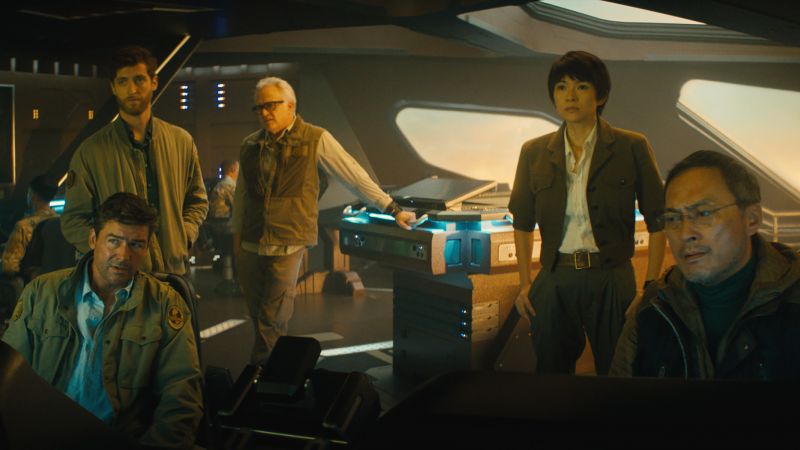ComingSoon.net was fortunate enough to sit down with the director and cast behind one of the summer’s biggest blockbusters, Godzilla: King of the Monsters. Check out the whole chat below!
In 2014, Gareth Edwards brought a Jaws-esque Godzilla movie to the screen. The film follows nuclear plant supervisor Joe Brody (Bryan Cranston) as he obsessively searches for the truth behind the accident that claimed the lives of many, including his wife, on the day when the the building inexplicably went up in flames. Joined by his son, Brody discovers the existence of giant monsters, the reawakening of which pose a threat to all of humanity.
Now, director Mike Dougherty, along with stars Millie Bobby Brown, Vera Farmiga, Bradley Whitford, O’Shea Jackson Jr., Ken Watanabe, Kyle Chandler, Thomas Middleditch and Ziyi Zhang have added their own entry to the Godzilla franchise.
There’s a specific scene in the film that takes place in Boston — could’ve been any city in the world, who’s the Boston Red Sox fan?
Michael Dougherty: My writing partner Zach and I chose Boston because I think getting destroyed in a Godzilla movie is a badge of honor, it means your city matters, if it gets destroyed in a Godzilla movie. We’ve seen New York, Los Angeles, San Francisco so many times, why not Bean Town?
Fenway Park and the people who run it are notoriously difficult about letting people film there, very few films have been filmed there. How did you do it and what did you film there? Was it just background, or real people?
Dougherty: It was a combination of location shooting, background plates, digital set extensions so it was pretty seamless. You know the scene of Millie actually entering the field with all the evacuees, that was all done in Atlanta, but merged with actual background plates shot in Boston. But the Fenway group, they were a dream to work with, they were enthusiastic. I think they understood, again, because getting your city trashed by Godzilla is an honor.
Can you talk about building upon what Gareth Edwards did in the first movie, coming in for the sequel, and expanding the world?
Dougherty: I love what Gareth did in the first film. It felt like the most realistic, well-rounded Godzilla film that I always wanted to see. As a kid I always fantasized about Godzilla showing up to destroy my school, I used to fantasize about Godzilla ripping off the roof of my church, so I had a habit of imagining Godzilla entering the real world and that’s what Gareth’s film felt like. It felt like if you looked out the window and saw those creatures, it would be that movie. It felt very grounded. At the same time, I realized there was still room to grow from there. It was like okay, Gareth presented this wonderful vision of what Godzilla in the real world could feel like, what if you threw King Ghidorah into it? What if you threw in Rodan? What would the most grounded, realistic version of those creatures, who are very fantastical, because if you’re working with three-headed dragons and giant moths, you have to embrace some of the more mystical, fantastical qualities of it. It stops being pure science fiction and morphs into fantasy. At the same time, again, Gareth’s template was the perfect springboard for that, so I just dove right in.
Dr. Serizawa is not only a returning character, he’s also a pre-existing character and I’m curious if you went back and looked at the 1954 film to inform the character here, and what was it like to create a pivotal moment that harkens back to the original film?
Dougherty: I was adamant about bringing Serizawa Dr. Graham back, because they were my favorite characters from the first film. As much as I enjoy the sort of G.I. Joe adventure that Aaron Taylor Johnson was on, the scientists that were actually studying the creatures and knew more about them, I really wanted to shift the focus to them. I feel like we don’t have enough people in big budget movies who are just scientists. Let the smart people be heroes for once. It was important to me that Ken’s character have a dash of the original ’54 character. For a minute I was toying with the idea of putting in an eye patch, so like in the five years in-between movies, something had happened. But then I realized like, oh no, that’ll look too much like Nick Fury. But his big scene with Godzilla was a purposeful reflection of the climax of the original ’54 film. In my mind, this Serizawa is setting things right.
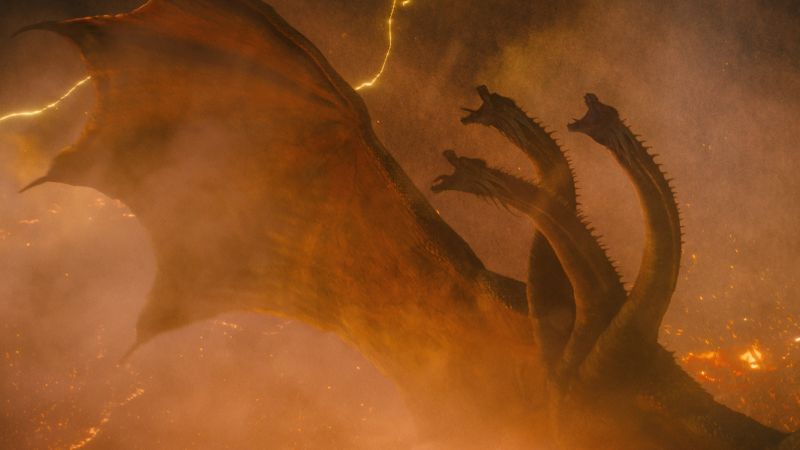
The score is absolutely stunning and it’s breathtaking. Did you work closely with Bear on that or did you give him free reign. There’s a lot of fun beats from this world of years past that’s worked into the score.
Dougherty: Yeah, both. I worked very closely with him and let him do his thing. I fell in love with Bear’s music with the revival of Battlestar Galactica, roughly ’03-’08, I think it was. His music was so different and bold, it didn’t sound like your typical space opera, it didn’t sound like it was trying to be Star Wars or Star Trek, it was its own unique flavor and he had really great way of blending the modern and the old. In the Battlestar music, he brought in instruments that were thousands of years old, and I wanted that for this film. I didn’t want the score for this to sound like every other tent pole movie. I wanted it to sound like the music from when the Titans ruled the earth. We kept talking about how it was a monster opera, so if you just sat and listened to the score with a pair of headphones and closed your eyes, it would transport you to a time when Godzilla and his kind ruled the planet. It’s a dream come true, he’s extraordinarily talented, I would work with him again in a heartbeat. It was important to bring back Mothra’s themes and Godzilla’s themes. I’m glad we were able to be the first American film to bring those themes back. Bear was the right man to do it.
Can you talk a little about the villain choices? Obviously, Godzilla has a lot of villains you could’ve chosen from.
Dougherty: I mean King Ghidorah is the Joker to Godzilla’s Batman. What I love about them in the old films is that you sense the rivalry. I don’t know if it’s just inherent in the creatures or what, they look like two monsters that would absolutely hate each other, like maybe they fought over a woman at some point, I don’t know. There’s bad blood between these guys. You can feel it, even though they didn’t have dialogue with each other. So, it made sense that King Ghidorah would be the one here. I really love the Mutos creature design, but you don’t have the same sense of history with those creatures. So being able to bring in King Ghirodah, being able to update it with new technology. I’m a huge fan of dragons, Eastern dragons especially. My middle name actually means dragon in Vietnamese. So, Patrick is my white name and my parents had a debate about what my middle name should be. My mother, who is Vietnamese, was insistent on ‘Long’, which means ‘Dragon’, so it’s Michael Patrick Long Dougherty. So I’ve just grown up with this obsession of eastern dragons and we’ve never seen a really good eastern dragon in movies and I thought well, King Ghidorah should be the one.
Ken Watanabe: Yeah, it was like earth, air, fire water.
Dougherty: Yeah, the idea that each of these creatures is an elemental thing. Ghidorah is fire, Rodan is air, Godzilla is water, and Mothra is earth.
Watanabe: If I think back to when I was a child, I just loved King Ghidorah. Boys love a strong villain.
Dougherty: Don’t say that! Girls like strong villains too.
Godzilla smashed his first building back in 1954 with director Honda’s original post WWII monster movie, and here we are in 2019 and the king of the monsters is back again, still wreaking havoc. What do you think it is that gives the big guy his staying power after all these years?
Bradly Whitford: The reason this story keeps getting re-told twice a generation is it’s a story about man’s arrogance, thinking they have transcended nature. Obviously this is an important time to talk about how community can disrupt order in the world.
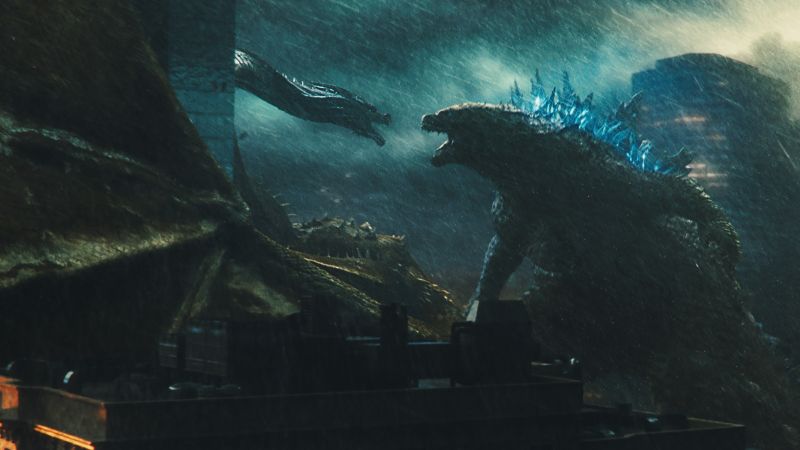
What was your preparation like for the role, and what’s it like to act against something that’s not there?
Millie Bobby Brown: I mean, there was not as much preparation as you’d think. Basically when you watch the movie, I have a lot of running, and running takes a toll. I had to prepare, like when I’m running uphill, to make sure that I wouldn’t be out of breath before I reached the top of the hill. The first time I did it, I was like [pretends to be out of breath]. So, I kept practicing, I was training everyday, so I trained physically for the role. And how was it to perform when there’s nothing there? You just do it. You just get there and you just do it. You imagine like something’s there, and you go, [gasps] and then there you go!
Can you talk about your affection or indifference to Godzilla from the time you were children to now?
O’Shea Jackson Jr.: I love Godzilla. I’ve loved Godzilla since I was a kid, watching it on the Sci-fi Cannel, playing the video games, using the action figures to destroy my Legos. When I did my first film, Straight Outta Compton, I listed my five heroes that weren’t my father and Godzilla was at the top of the list, so I’ve been waiting for this my entire life and I just happened to be lucky enough to get this audition and knock it out.
Brown: I’ll be honest, I was definitely not a fan of Godzilla — which is a good thing! Because my character isn’t. My character is just a teenage girl who’s learning about Godzilla and the Titans as she goes along, she doesn’t really know how she feels about him. I think that her love and affection towards him grows during the movie, and also during Godzilla vs. Kong.
Are you in that movie?
Brown: Yes I am. They were like, do you want to be in the movie? I was like ugh, I guess! No, of course! Of course! It was amazing.
Thomas Middleditch: We didn’t get that call.
Brown: Yours is coming!
What was your relationship like with director Mike Dougherty?
Jackson Jr.: Once I realized he’s a fan of Godzilla, how much he cares about Godzilla, I realized they gave us the keys to the car.
Godzilla: King of the Monsters is now playing in theaters.
Godzilla origins and evolutions
-
Gojira
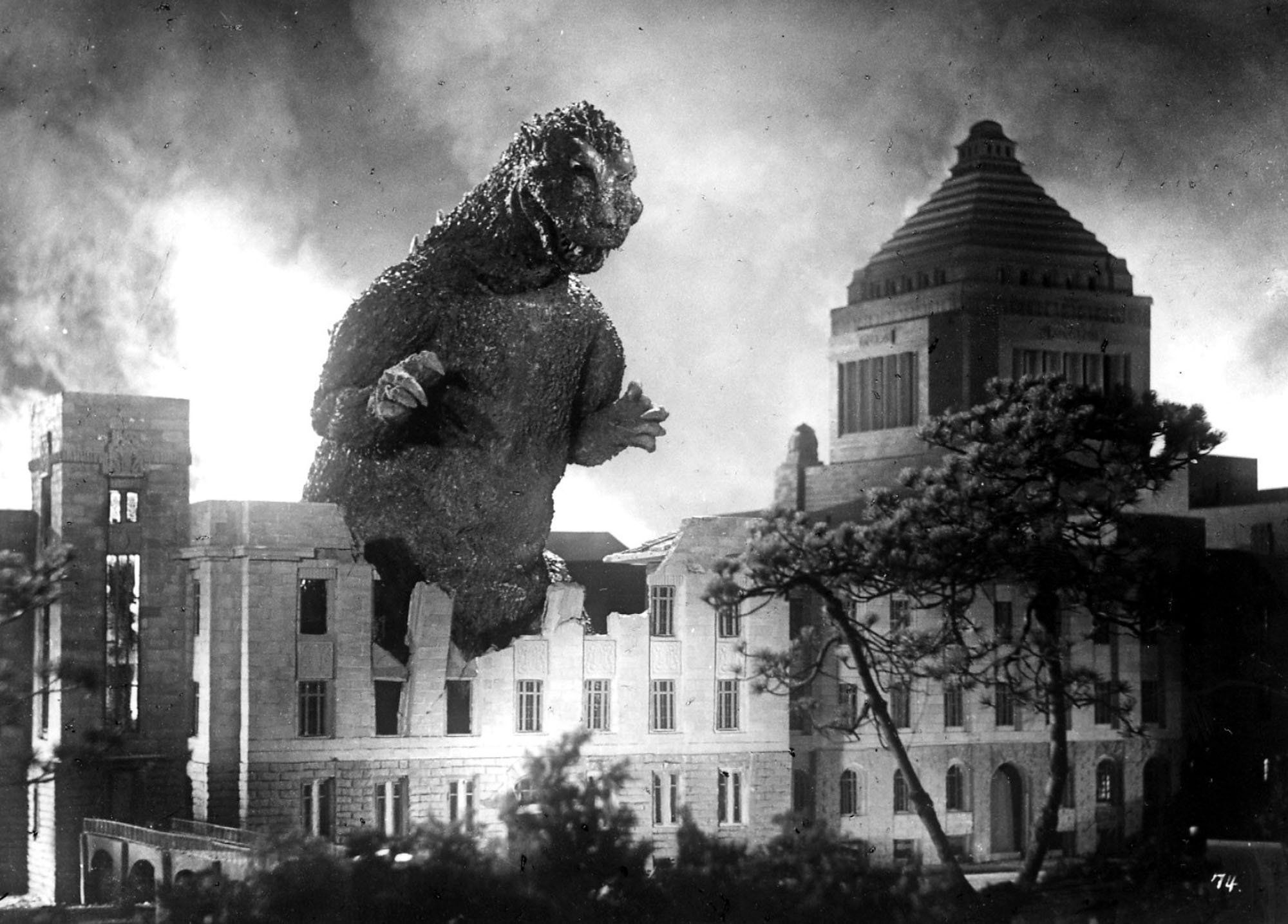
The original 1954 film landed in Japanese theaters on November 3rd of that year. Godzilla's creators arrived at the Japanese name for the monster by combining the Japanese words for gorilla and whale, which is an appropriate name for the big guy. Originally set to be stop motion like the very popular "The Beast from 20,000 Fathoms," a suit of the creature was eventually created and worn by Haruo Nakajima, who would later go on to play the monster in 11 more films.
The film would be released in America theaters two years later under the title "Godzilla: King of the Monsters" featuring additional scenes with Raymond Burr filmed specifically for the US release.
-
Godzilla Raids Again

Just a year later in 1955, audiences were given a sequel to "Gojira" with "Godzilla Raids Again," also known as "Gigantis the Fire Monster." The film saw the first of the other Toho kaiju brought into the series with the four legged Anguirus, who fights with Godzilla a number of times in the film. You might be wondering how Godzilla could be back for the sequel, and it's a simple enough explanation, it's another Godzilla. Apparently they're common.
-
Rodan
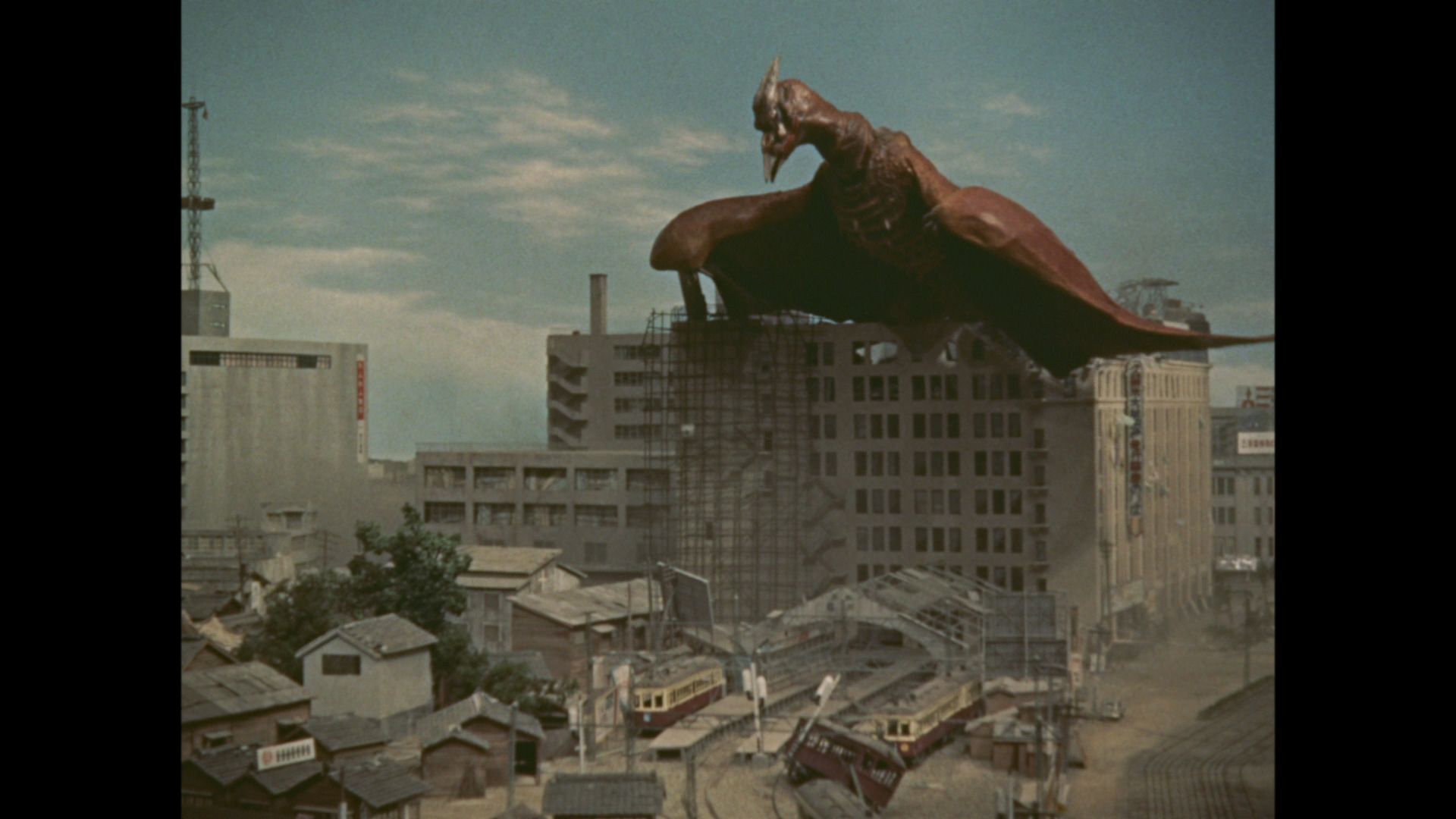
1956 would also see the introduction of the flying kaiju Rodan in his very own feature film which featured two of the titular monster. Capable of flying at supersonic speeds, the monster would later go on to appear in five other Godzilla films. "Gojira" director Ishiro Honda also helmed this film.
-
Mothra

Five years later, Toho would debut another solo kaiju film in the form of "Mothra," who would also go on to become an ally of Godzilla. Probably one of the most bizarre of the individual kaiju movies, "Mothra" features the tiny twin girls who are kidnapped from their home island and pray to Mothra to save them. Initially appearing as a giant caterpillar, Mothra eventually builds a giant cocoon on the Tokyo Tower then emerges in her iconic form.
-
King Kong vs. Godzilla

The very next year, Toho would debut the third, and arguably one of the most popular Godzilla films, "King Kong vs. Godzilla." Featuring a bit of a meta take on the fighting kaiju movies, the film features a Mr. Tako who wants to find a television series with high ratings to boost the sales of his products. He's given the idea that they would make a show about a giant monster, which is where King Kong comes in. Godzilla, on the other hand, is broken out of the iceberg that he was frozen in at the end of "Godzilla Raids Again" and decides to head back into Japan where he is greeted by the giant ape. The pair battle a number of times, and Kong is even granted enhanced strength thanks to some electrical lines. In the end it appears King Kong is the victor, as Godzilla never surfaces following their final bout, though he's never explicitly said to have perished either.
It has long been the subject of speculation among fans that the American and Japanese versions featured alternate endings wherein their respective monsters came out the victor, but that has since been denied by Toho as being the case.
-
Mothra vs. Godzilla

Two years later, Toho would debut "Mothra vs. Godzilla," which saw the kaiju battle each other for the first time on the big screen. The film begins with one of Mothra's eggs washing ashore in Japan. After much military and civil discussion about what to do with it, the twins from the first Mothra film appear and explain that it belongs to the winged kaiju. After Godzilla emerges from the water (it's unknown if this is the same Godzilla that suffered a defeat at the hands of King Kong), the natives of Mothra Island convince the monster to go after its egg and defeat Godzilla, who is causing quite a bit of damage as usual. Godzilla actually defeats Mothra, who dies on top of her egg, which suddenly hatches, revealing two more Mothra larvae. The pair of caterpillars go after the King of the monsters and wrap him up in a giant cocoon, leaving him to drown in the water.
-
Ghidorah, the Three Headed Monster
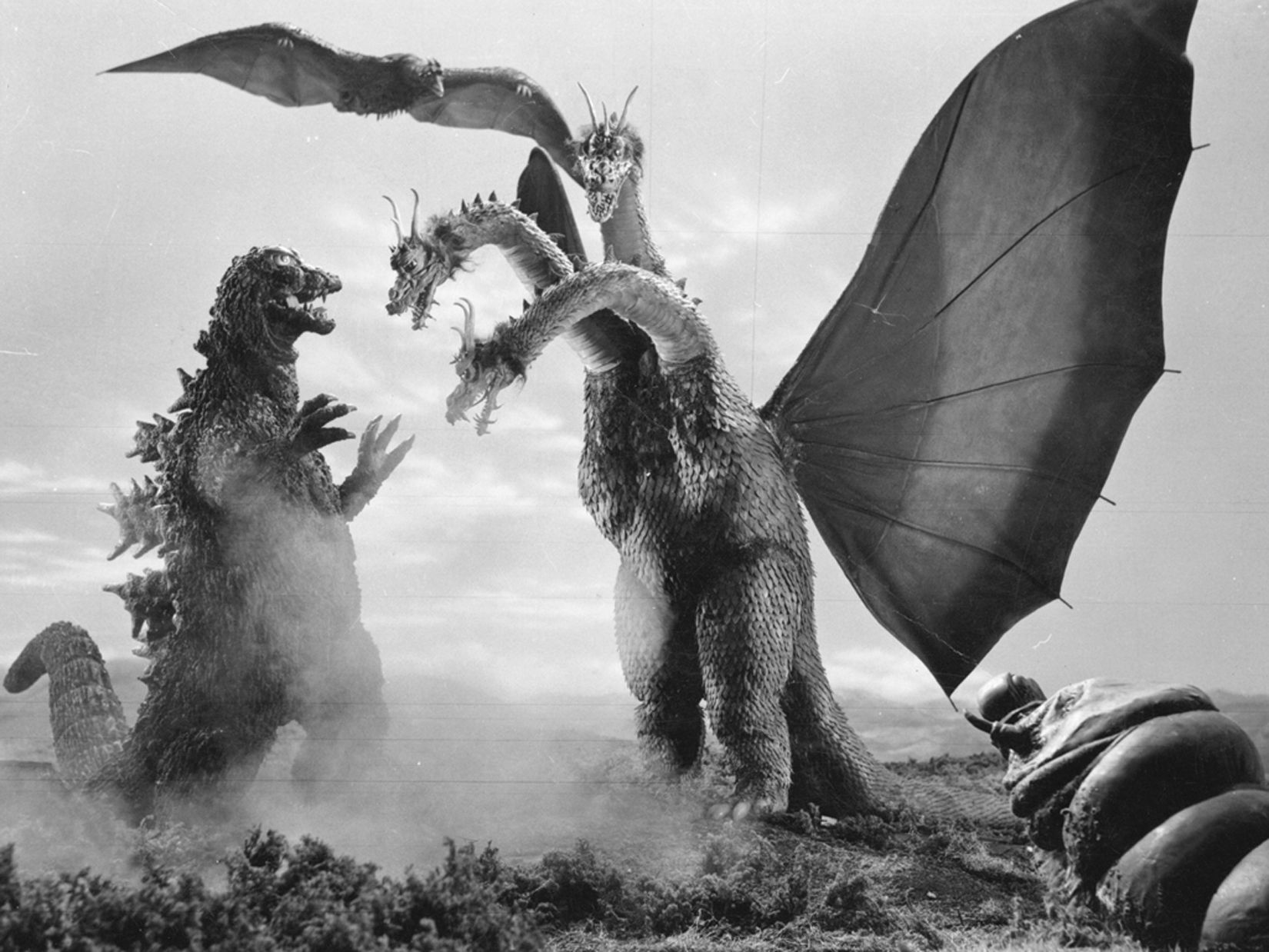
That same year, Toho would debut one of the staples of the Godzilla franchise, "Ghidorah, the Three Headed Monster." The film was seminal to the franchise for a variety of reasons: the introduction of the kaiju Ghidorah, the first instance of Godzilla teaming up with other monsters, and finally the transition of Godzilla from villain to hero. Along with the help of Rodan and caterpillar Mothra, Godzilla faces off for the first time against Ghidorah, whose three heads and two tails prove to be quite a challenge.
-
Invasion of the Astro Monster
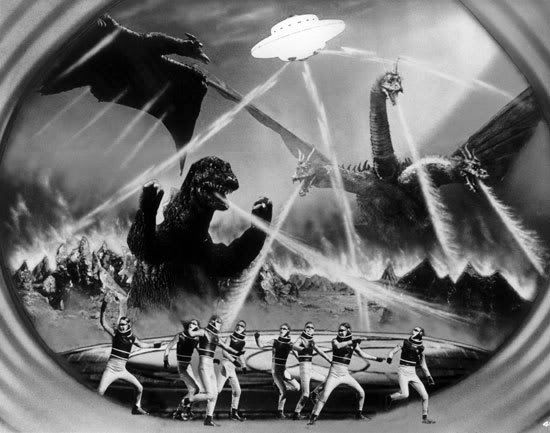
Just a year later, a follow-up to "Ghidorah, the Three Headed Monster" was produced under the name "Invasion of the Astro Monster." The film saw a group of aliens on the mysterious "Planet X" ask to "borrow" Godzilla and Rodan to use in combat against a creature they had dubbed "Monster Zero," which turned out to once again be King Ghidorah. As you can imagine, the aliens aren't as friendly as they first appear and later threaten to turn the monsters on the people of Earth as they're under their control. After their control is lost, Godzilla and Rodan once again deliver a skyscraper sized butt kicking to Ghidorah.
-
Godzilla vs. the Sea-Monster

Also known as "Ebirah, Horror of the Deep," this 1966 entry in the franchise really took the wackiness of the series to heart and featured a giant lobster monster (the eponymous Ebirah), a terrorist organization, and an exploding island. The film marks the only appearance of Ebirah until the 2004 "Godzilla: Final Wars," and given how badly Godzilla beats him in their final fight it's easy to see why.
-
Son of Godzilla

Easily one of the strangest in the entire franchise, "Son of Godzilla" introduces the notion that Godzilla actually has offspring. Commonly referred to as Minya or Minilla, the titular character is born from an egg and immediately attacked by a group of giant mantis kaiju called Kamacuras. Godzilla quickly intervenes and saves his son. The remainder of the film shows the pair bonding, or attempting to bond, including Godzilla giving his son "atomic breath lessons." It also features something previously unseen in the series: Godzilla in the snow!
-
Destroy All Monsters

Even though it debuted just a year later, "Destroy All Monsters" propels the events of the Godzilla franchise to many years in the future wherein all the kaiju have been collected and live together on "Monster Island." A group of aliens then descend on the Earth and take control of a number the kaiju, and set them off to attack the capitals of the world, among them are: Godzilla, Rodan, Mothra, Gorosaurus, Manda, and a few others. The events of the film come to a head after the aliens are overpowered and the kaiju regain control of themselves, only to have to fight King Ghidorah once again, whom they handily defeat.
-
All Monsters Attack
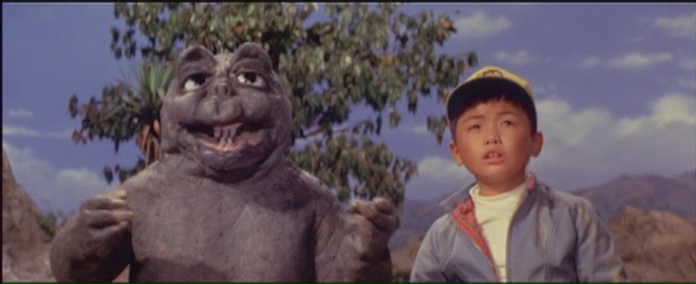
Though the name might imply that it is a follow-up to "Destroy All Monsters," "All Monsters Attack" is more of a sequel to "Son of Godzilla" featuring a young Japanese boy named Ichiro who fantasizes about visiting Monster Island and befriending Godzilla's son. Often regarded as one of the worst in the series, the film uses quite a bit of stock footage from previous Godzilla films and is one of the only ones that features some of the kaiju speaking.
-
Godzilla vs. Hedorah
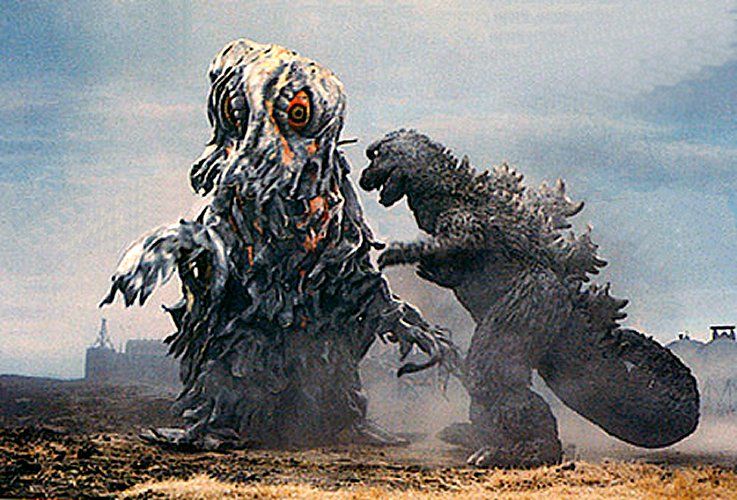
Two years later, Toho would return the franchise to its popular roots with another "Godzilla vs" film and this time he was fighting the pollution-based Hedorah, who evolves from a small tadpole into the giant sludgelike monster it's commonly known as. The film also goes by the titled "Godzilla vs. the Smog Monster," and is the only film to feature Hedorah until "Godzilla: Final Wars" thirty three years later. This film also marks the only time that Godzilla flies in the series, using his atomic breath as a propulsion system.
-
Godzilla vs. Gigan
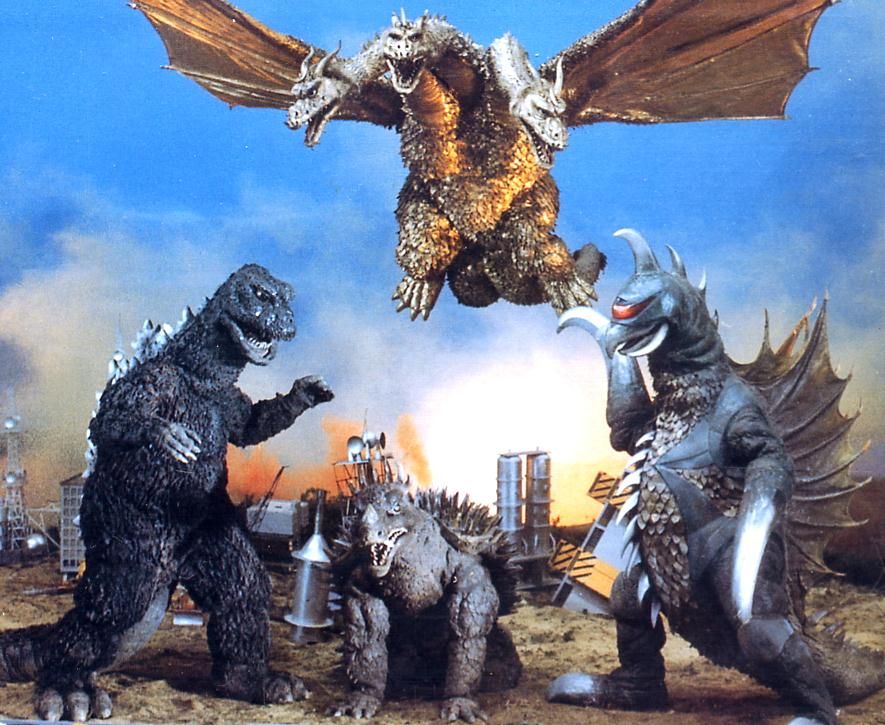
Released just a year later, "Godzilla vs. Gigan" goes for the typical story line wherein a group of aliens are trying to conquer the Earth using Kin Ghidorah and the new kaiju Gigan as their tools. The film features Godzilla and Anguirus taking on the pair, and ends up using quite a bit of stock footage from previous Toho productions. Besides the introduction of Gigan, the film is important to the franchise as it marks the final performance of Haruo Nakajima as Godzilla.
-
Godzilla vs. Megalon

The next Godzilla film would take the franchise into some pretty strange territory with the introduction of the underwater city of Seatopia and their guardian kaiju Megalon. The film also introduces the giant robot Jet Jagaur, who is controlled by voice commands, and later teams up with Godzilla to fight Megalon and Gigan, who is once again defeated.
-
Zone Fighter

In 1973, Toho debuted their own superhero TV series "Zone Fighter" which saw the titular hero going up against a race of aliens trying to take over the world. The series is included on this list because Godzilla, Gigan, and King Ghidorah all made appearances on the series. The same suit from "Godzilla vs. Megalon" was used in the series.
-
Godzilla vs. MechaGodzilla

In 1974, Toho would introduce one of the most memorable antagonists of the Godzilla franchise, MechaGodzilla! Originally appearing as Godzilla himself, once a second Godzilla appears it's not long before the skin comes off and the robotic foe is revealed. Piloted by aliens bent on destroying the Earth, you'd think they would learn by now, MechaGodzilla is defeated by our series hero along with the underutilized King Caesar.
-
Terror of MechaGodzilla

Just one year later a sequel to the film would debut and this time the Black Hole aliens are once again trying to conquer the Earth with their newly built MechaGodzilla 2, and with the help of the recently discovered Titanosaurus, surely they can defeat Godzilla, right? Have you been paying attention?
The film was the lowest grossing Godzilla film of all time in Japan and as a result, the series was put on hiatus.
-
The Godzilla Power Hour
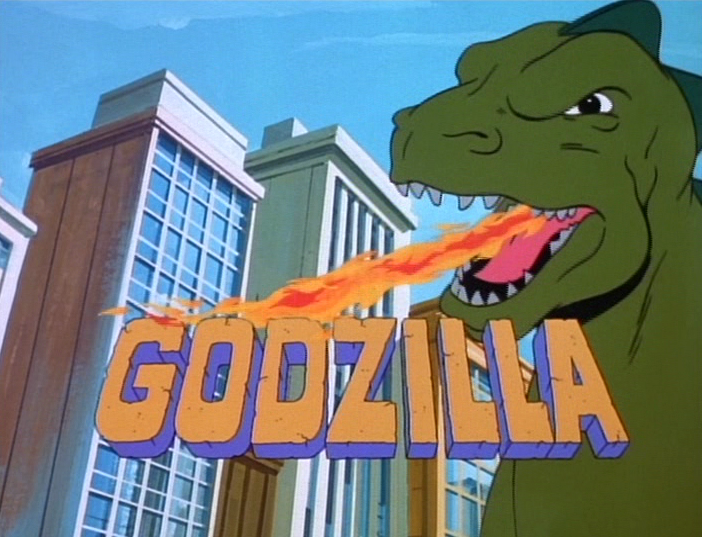
The one-hour cartoon series by Hanna-Barbera not only brought Godzilla to television in animated form but also gave us "Godzooky," an infant Godzillasaurus that was capable of flying and was in fact the nephew of the king of the monsters. Lasting for just 26 episodes, the Godzilla featured in the series was far more green than he had ever appeared, featured brown scutes on his back, and lacked his trademark roar.
-
The Return of Godzilla
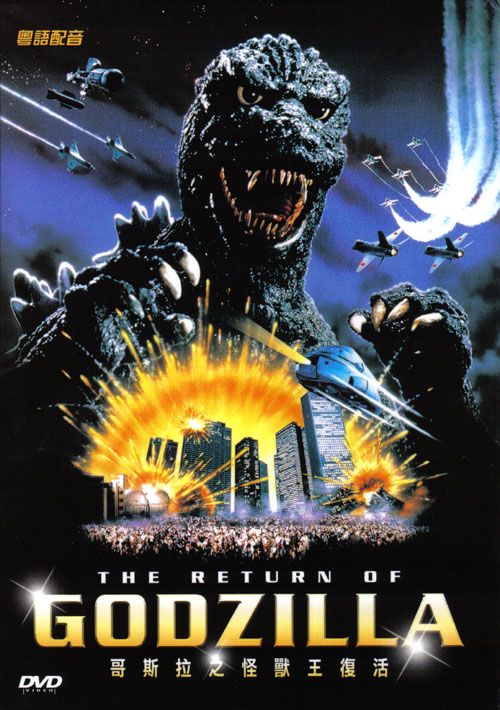
Big G would lay dormant for nine years before appearing once again on the big screen in 1984's "The Return of Godzilla." The film would pick up after the events of the 1954 film, serving as a direct sequel with no acknowledgment of the previous movies in the series. Godzilla's appearance did go through a bit of an upgrade from his last time on film, as his design in "Return" was more slick and gruesome than previous appearances.
-
Godzilla vs. Biollante
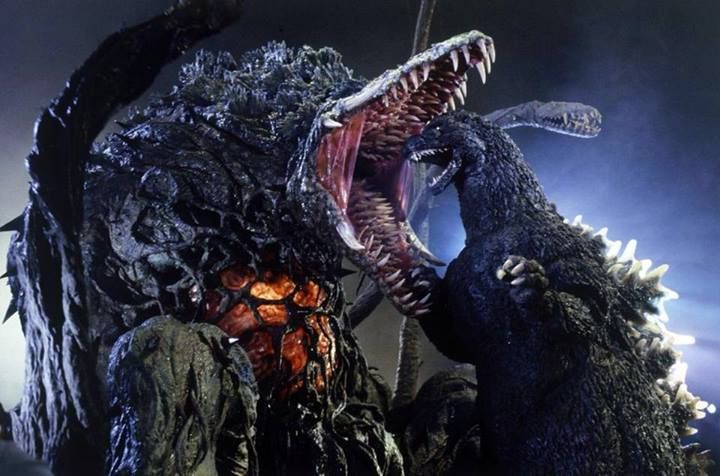
Five years later Godzilla would stomp back into theaters with "Godzilla vs. Biollante." A sequel to 1984's "Return," this film saw the creature going up against Biollante, a plant-based kaiju that was created by mixing Godzilla's DNA with that of a rose, which may not sound like much but proved to be a tough opponent for the King of the Monsters and one of the best films in the entire franchise.
-
Godzilla vs. King Ghidorah
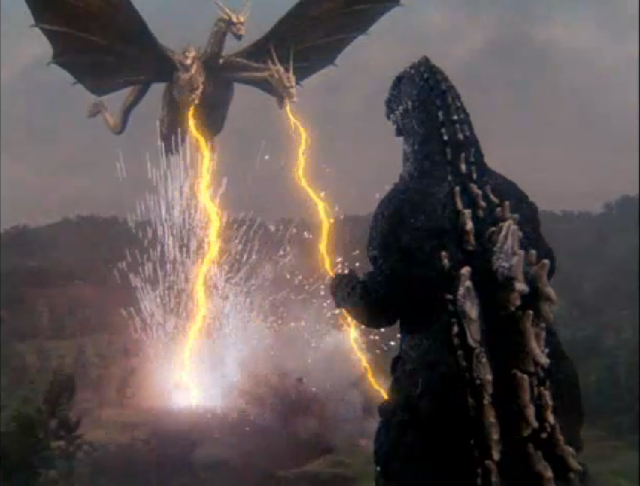
Two years after his bout with Biollante, the third entry in this rebooted Godzilla franchise would not only bring back the antagonist King Ghidorah but also take the franchise into some pretty wacky territory. In a very Terminator-esque plot, a group claiming to be from the year 2204 attempts to stop the creation of Godzilla. This is the first film in the franchise to reference the "Godzillasaurus," which would go on to be a staple of the Godzilla canon as the dinosaur that would mutate into Godzilla. The film also explore the origin of King Ghidorah, citing his creation as being the result of three "Dorats" (pets from the future) becoming fused together and mutating as a result of the hydrogen bomb. It's a strange movie.
-
Godzilla vs. Mothra
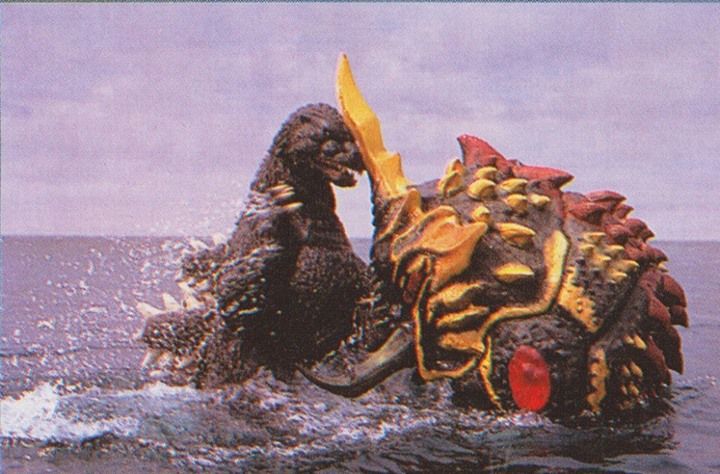
The next year, Toho would bring us "Godzilla vs. Mothra" which would reimagine the previous incarnations of the insect-based kaiju for the new series but also bring in a new one, the "Black Mothra" who is officially called Battra.
-
Godzilla vs. MechaGodzilla II
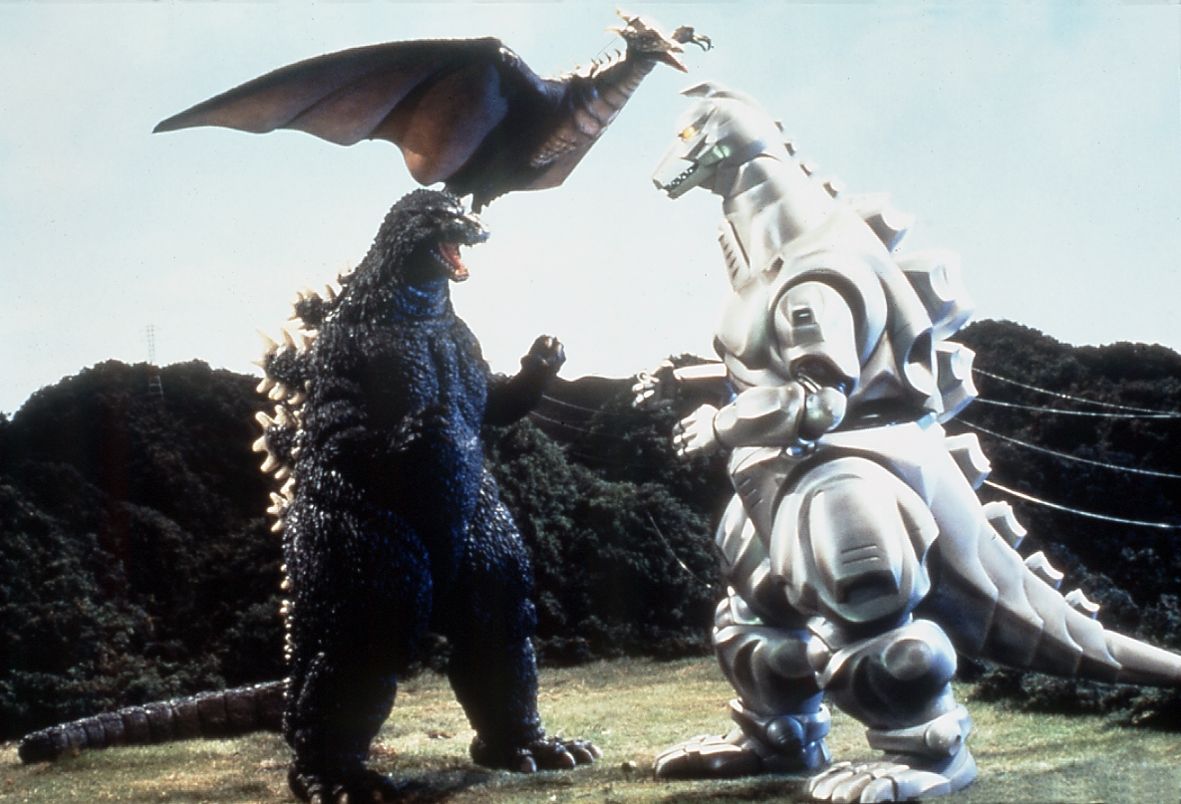
After the re-introduction of Mothra, the next film in the Godzilla franchise would reintroduce the robotic foe MechGodzilla, who was constructed from the remains of Mecha-King Ghidorah, as well as Rodan and Godzilla's son.
-
Godzilla vs. SpaceGodzilla
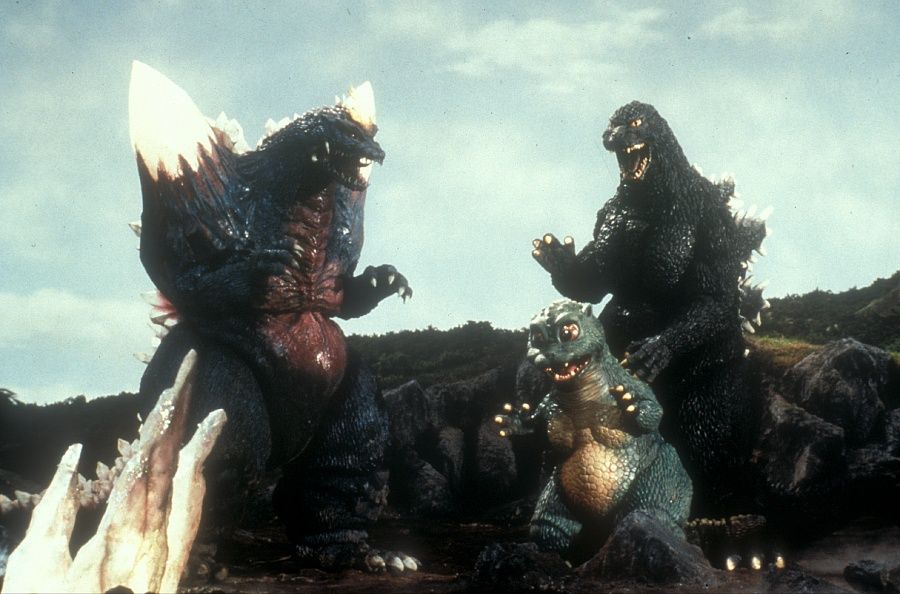
Here's where things get even weirder. The 1994 film "Godzilla vs. SpaceGodzilla" saw the DNA of Godzilla (appearing in space thanks to Biollante and Mothra) combining with a black hole to produce the uber powerful SpaceGodzilla. As the name implies, he does look quite a bit like Godzilla though he does have two large crystals sticking out of his shoulders, is a bit taller, and has a few differences in the teeth and color department.
-
Godzilla vs. Destroyah
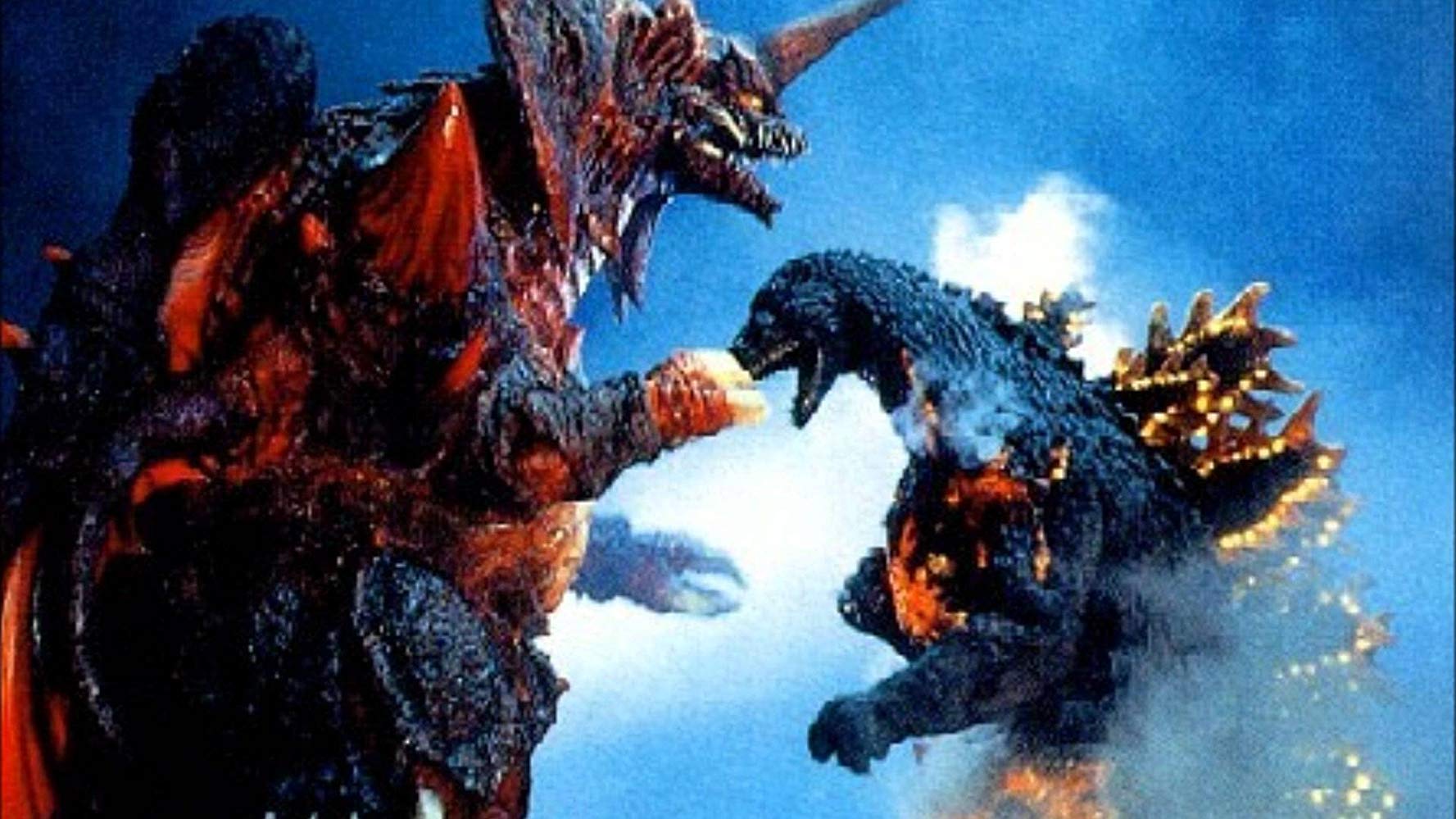
The next year would see the final entry in the "second era" of Godzilla films and it went out with quite a bang as Destroyah was easily one of the most formidable foes Godzilla has ever faced. Like Mothra and Biollante before him, Destroyah went through a series of phases throughout the film, ultimately culminating his chimera-like final appearance.
-
Godzilla Island
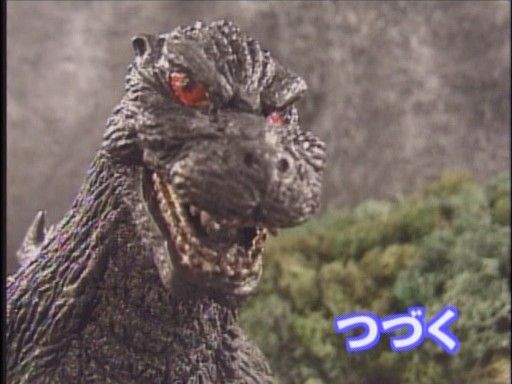
Toho's attempt at making a TV serial, "Godzilla Island" took place on an island in the Pacific in the distant future where all the kaiju lived. As you can expect, a number of problems arose when you collect all these monsters together in one place, and the series ran for nearly a year with 256 three-minute episodes.
-
Godzilla (1998)
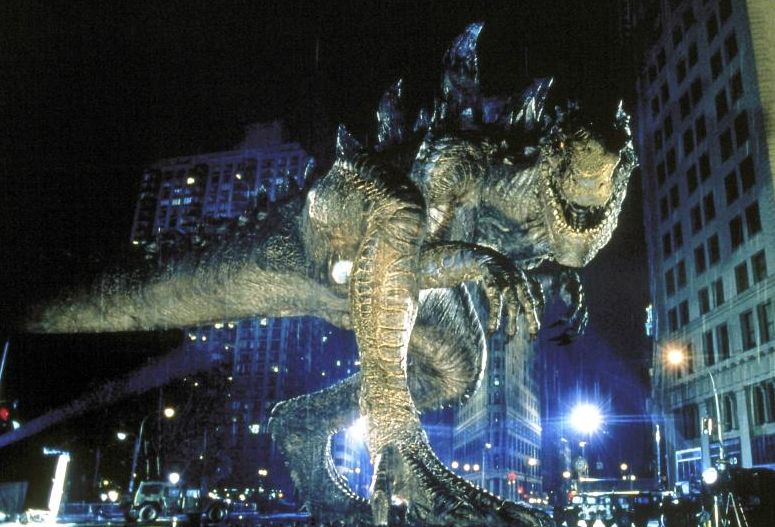
Three years after "Godzilla vs. Destroyah," it happened. The American remake of "Godzilla" from director Roland Emmerich. Commonly referred to as "Zilla" by fans of the series, this version of the monster was far more elongated and slimmer than previous versions. Similar in appearance to a komodo dragon, the monster did have the classic "atomic breath" though it appeared more in the form of regular fire than a blast of intense radiation. An animatronic version of the monster was created for the film, but he mostly appeared entirely as CG throughout the film.
-
Godzilla: The Series
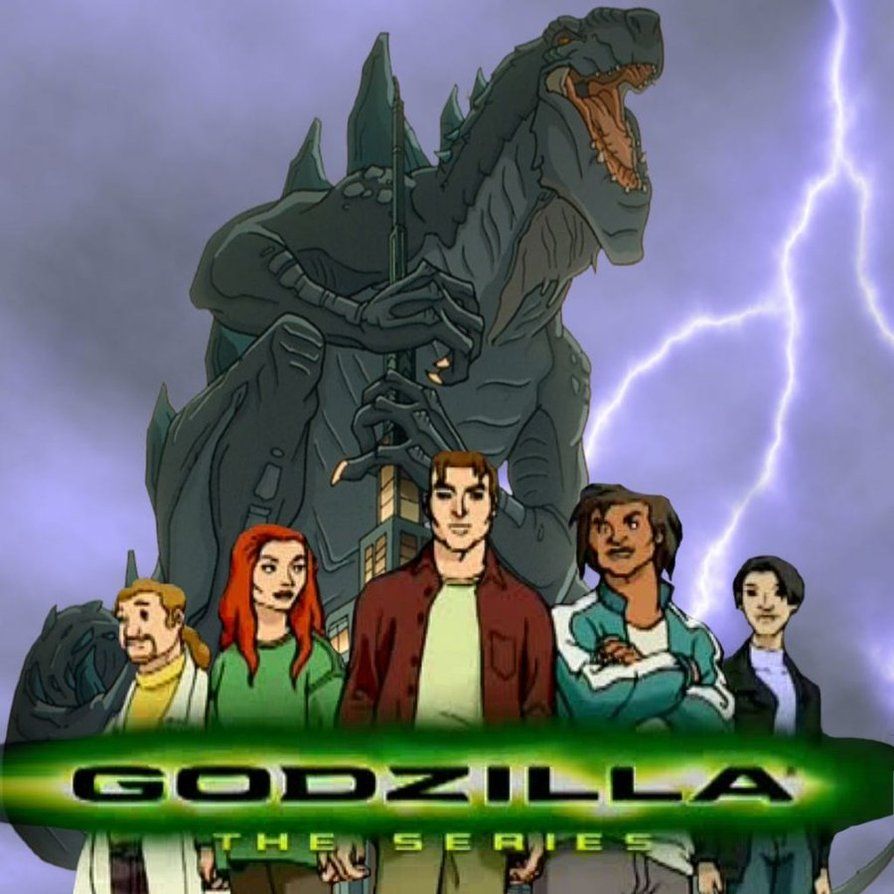
Picking up where the Emmerich film left off, "Godzilla: The Series" focused on the lone Zilla baby that survived the film and his adventures around the world fighting various monsters while staying hidden from the US military. It ran for just 37 episodes.
-
Godzilla 2000: Millennium
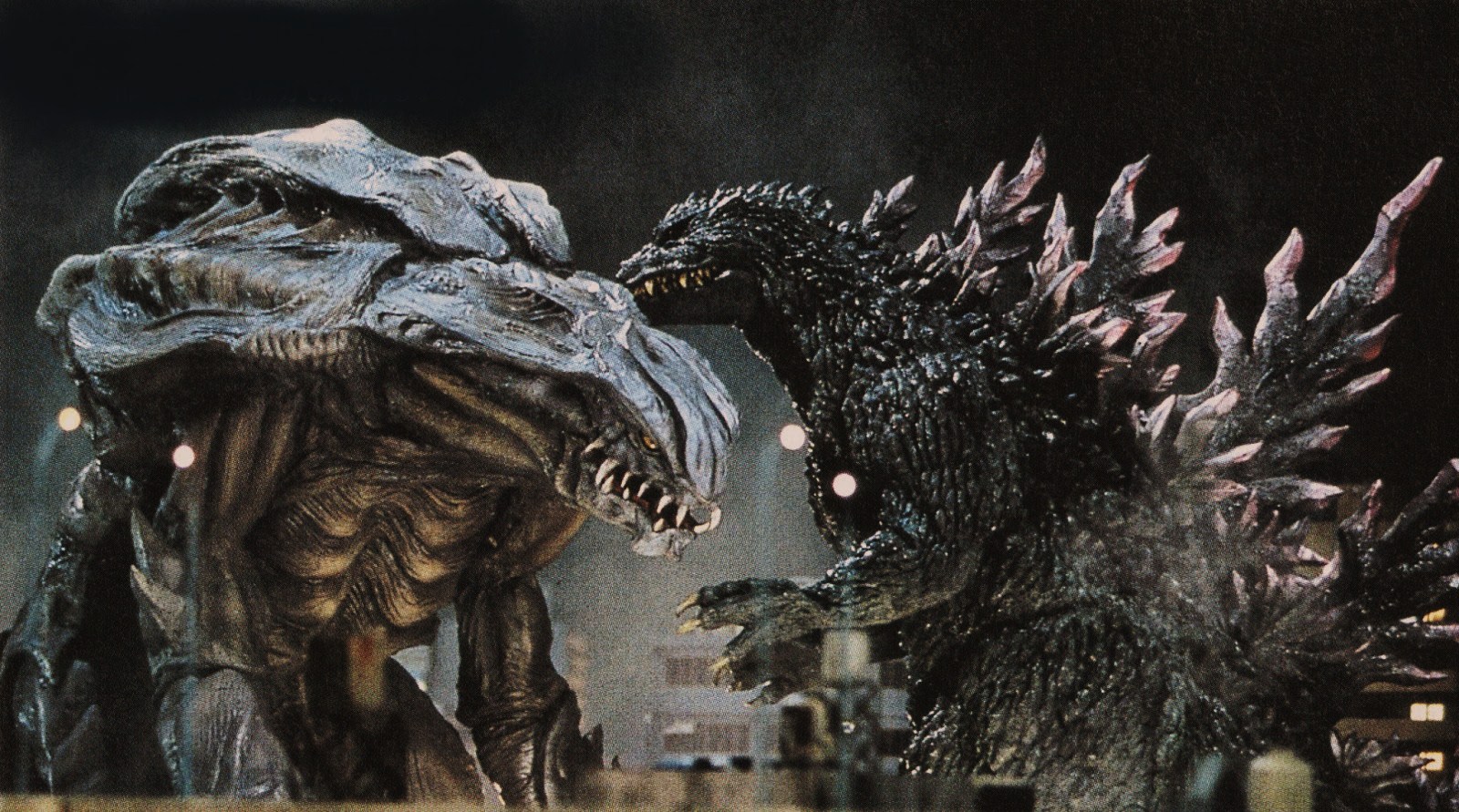
Released just one year after the American film, Toho debuted "Godzilla 2000: Millennium "which featured the most menacing and gnarly looking version of Godzilla to date. Featuring more pronounced scutes on the back and more jagged teeth and claws, the suit was worn by Tsutomu Kitagawa, who was just the third person to ever play the king of the monsters.
-
Godzilla vs. Megaguirus

The next year another entry in the third "Series" of Godzilla films debuted with "Godzilla vs. Megaguirus." Though Godzilla himself didn't change between the two, the film added Megaguirus to the canon whose origin is that a prehistoric dragonfly entered a wormhole into present day Japan, whose eggs hatched, encountered Godzilla, and injected his radioactive blood into the larva that birthed Megaguirus.
-
Godzilla, Mothra, and King Ghidorah: Giant Monsters All-Out Attack

Following his fights with Megaguirus, 2001's "Giant Monsters All-Out Attack" followed the plot point that three "guardian" monsters needed to be awakened to defeat Godzilla, those monsters being Mothra, King Ghidorah and Baragon. Godzilla himself did undergo a redesign for the film, featuring a more classic look to his face and body with shorter and stockier legs and arms once again.
The film also introduces a very interesting bit to the mythology when it notes that the souls of dead soldiers from World War II are trapped inside Godzilla and use him as a vessel to destroy modern Japan as a way of retaliation.
-
Godzilla Against MechaGodzilla
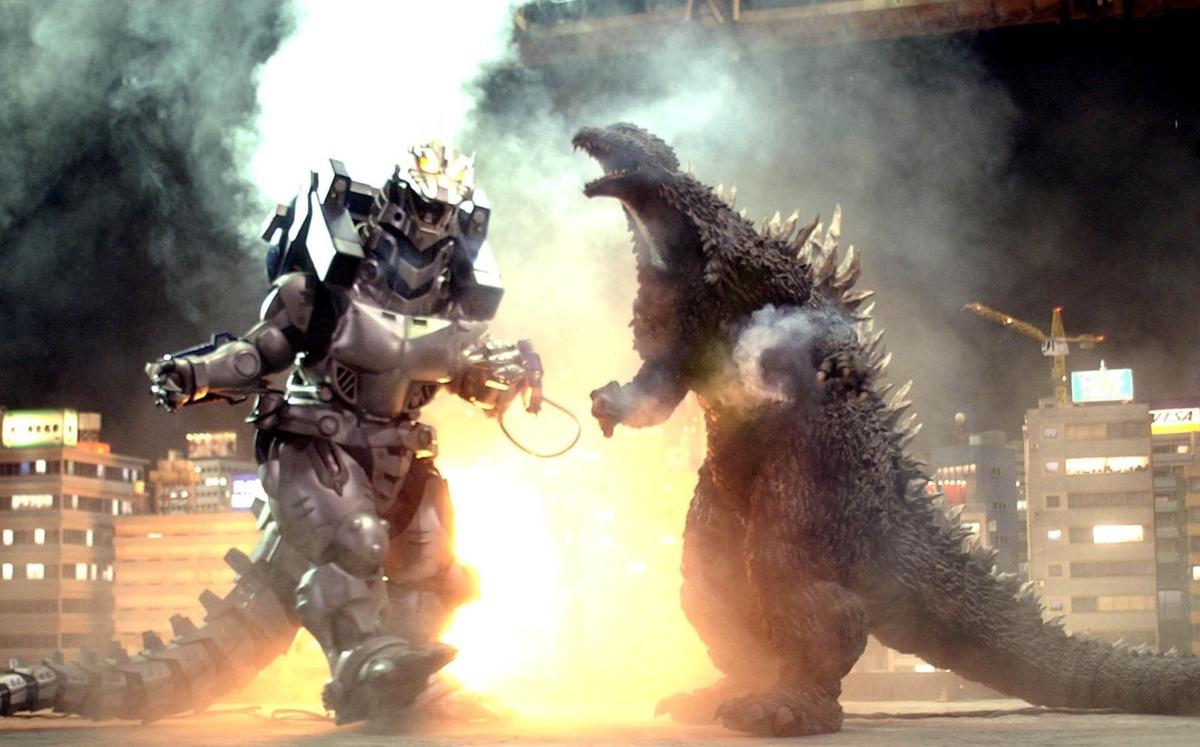
The reintroduction of MechaGodzilla into the "Millennium" franchise a year later saw both the robotic and organic versions of Godzilla undergoing some changes. MechaGodzilla was a lot sleeker and more Godzilla like in his design, in addition to a few added gizmos and weapons, while Godzilla's design went back to the original "Millennium" look albeit with his back scutes shaved down a touch.
-
Godzilla: Tokyo S.O.S.
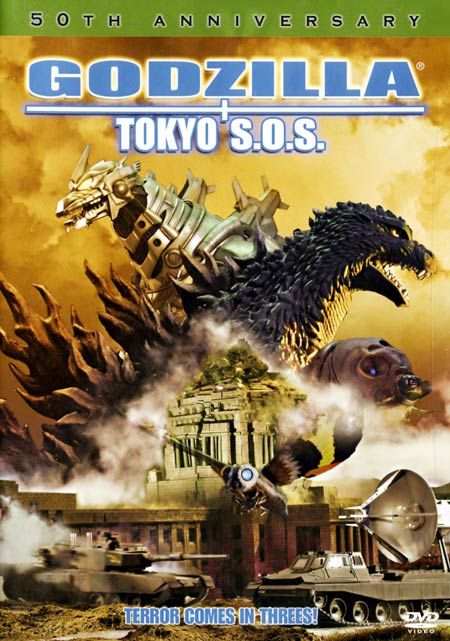
A direct continuation of "Godzilla Against MechaGodzilla," this 2003 entry in the series also folded Mothra into the plot as well as introducing the kaiju Kamoebas into the Godzilla franchise.
-
Godzilla Final Wars
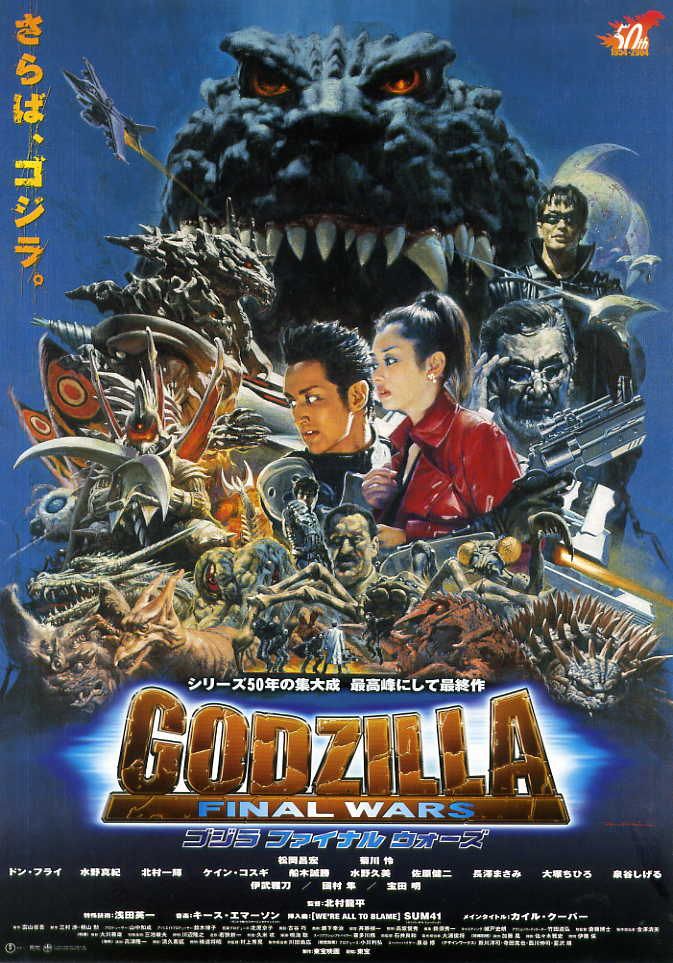
"Godzilla Final Wars" was the most expensive entry in the franchise's history and also turned into a box office bomb. Intending to celebrate the 50-year history of the character, the film included a large number of the monsters featured in the series, including: Minilla, Mothra, Anguirus, Rodan, King Caesar, Hedorah, Ebirah, Kamacuras, Kumonga, Manda, Gigan, the American "Zilla," and a new monster called Monster X (designed as a skeletal version of King Ghidorah).
-
Godzilla (2014)
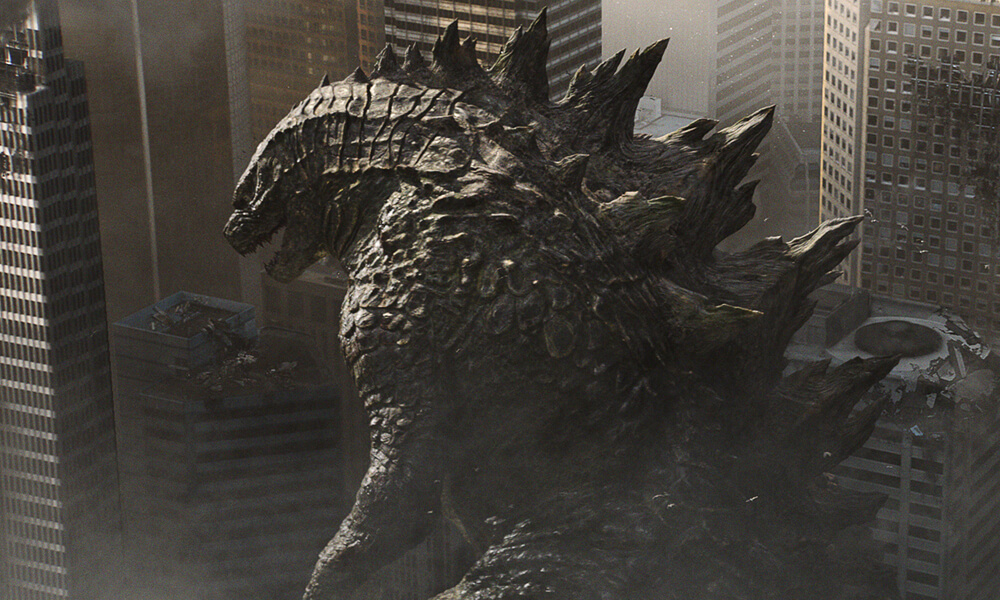
The latest attempt to bring Godzilla to life by a non-Toho studio comes from Warner Bros. and Legendary Pictures. What fans notice first about the big man in the upcoming reboot is his sheer size. Easily double the size of the original Gojira, Legendary's Godzilla is the biggest version of the creature on the big screen, not only in terms of his height but also his size in general. Come on, look at him!
-
Shin Godzilla (Form 1)
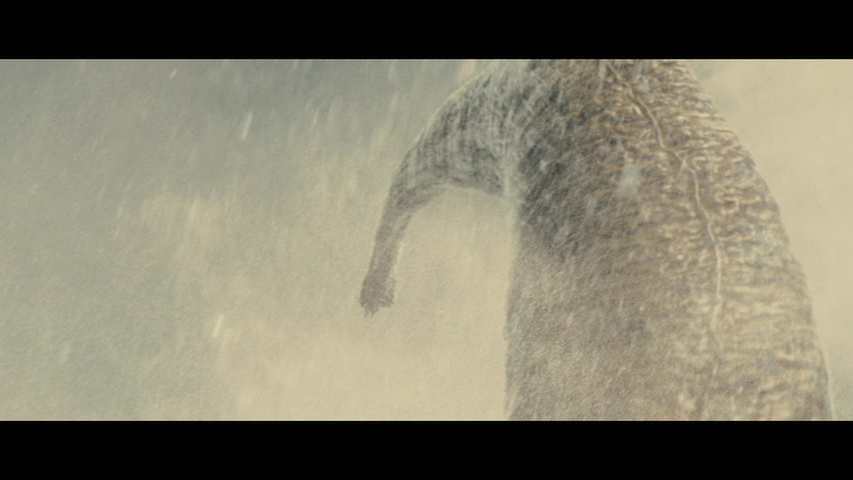
In 2016, Toho rebooted the iconic monster once again with Shin Godzilla, an all-new (and realistic) take on the kaiju that saw him grow and evolve over the course of the film. The first appearance of the beast is his tail which emerges from the water and guides it toward land.
-
Shin Godzilla (Form 2)
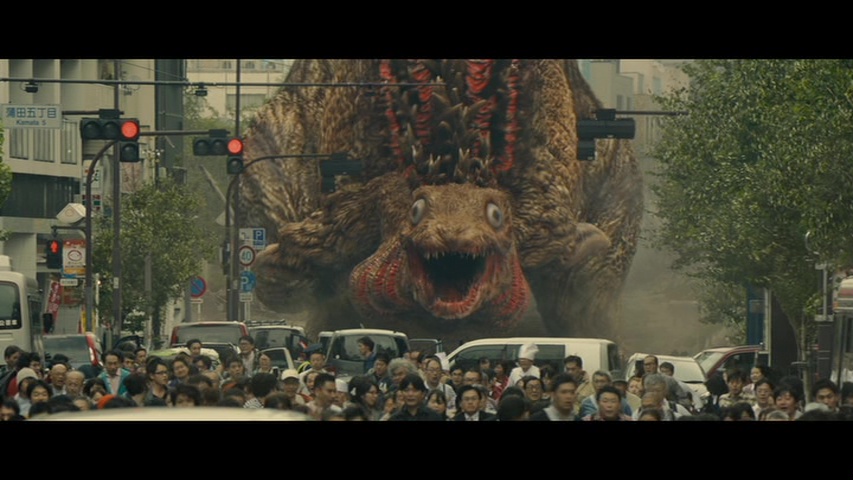
When Godzilla makes landfall he slides across the city on his stomach, as a creature used to living at the bottom of the ocean and making his first steps on land. Notable characteristics of this version include his googly eyes and pronounced red gills.
-
Shin Godzilla (Form 3)
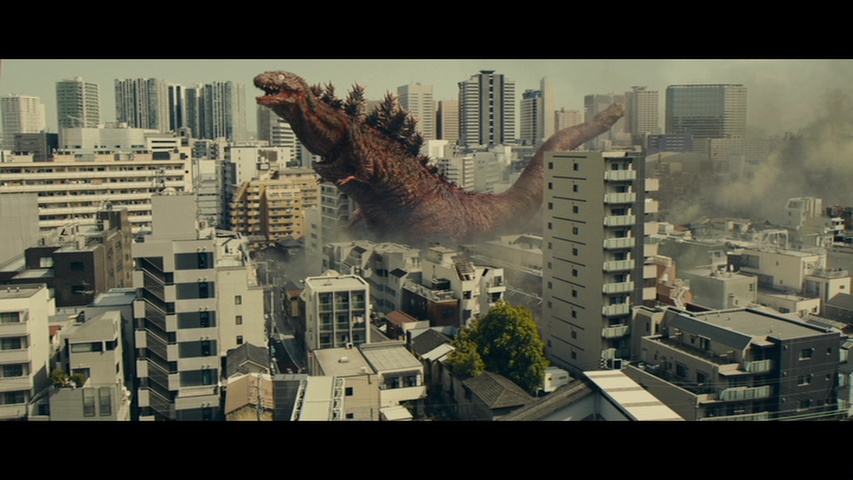
After some time on land, Godzilla stands up and actually grows arms, giving him a more pronounced dinosaur like appearance.
-
Shin Godzilla (Form 4)
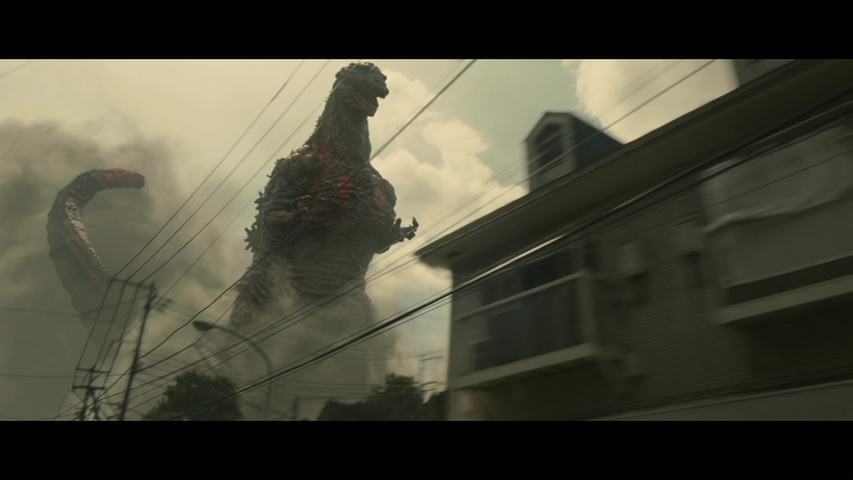
That's not the last of it though, as Godzilla grows into his final grotesque form, standing at 118.5 metres (389 ft) tall.
-
Godzilla Earth
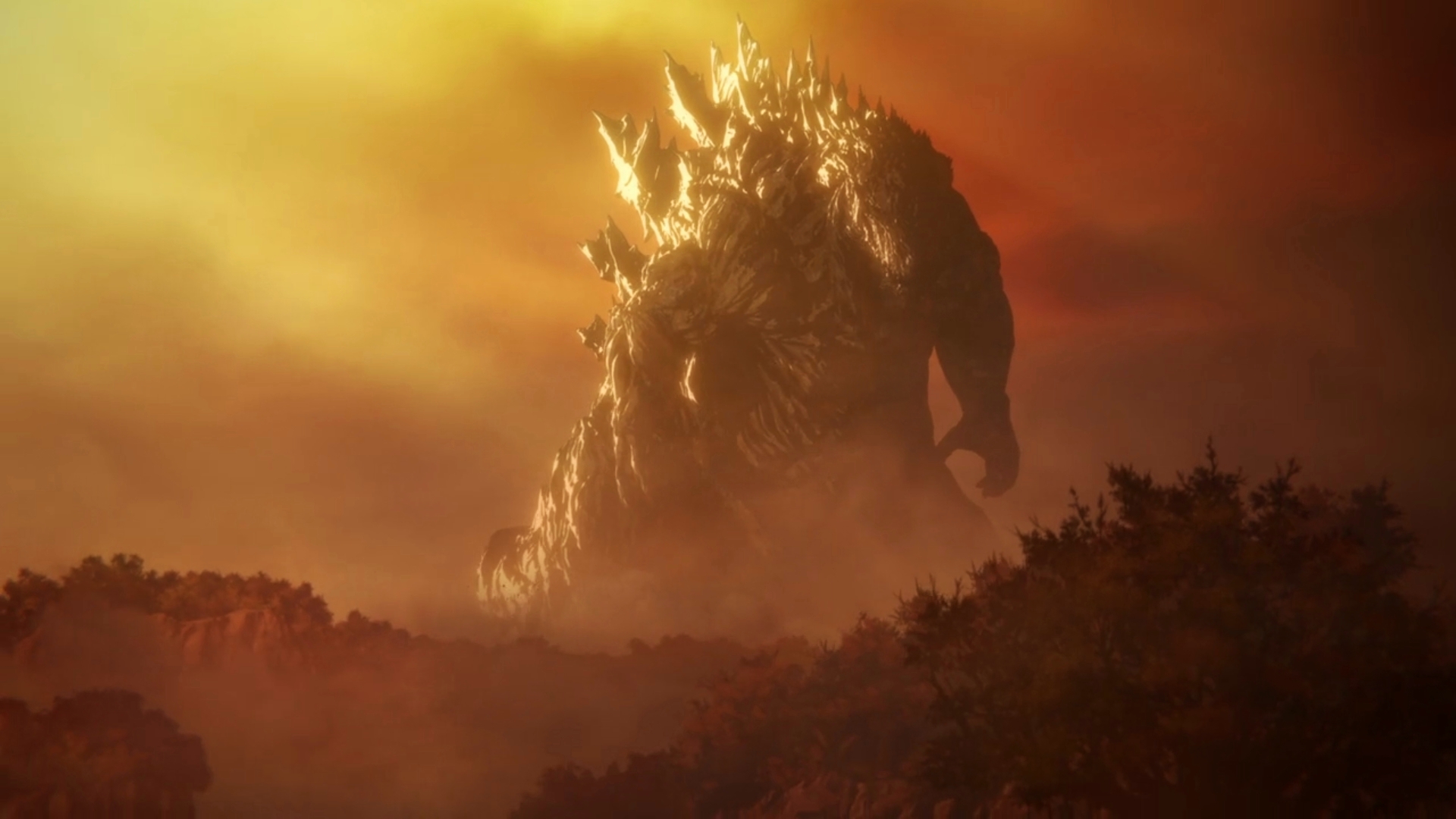
The trilogy of Godzilla anime movies feature the largest Godzilla ever seen, dubbed Godzilla Earth and standing over 300 meters tall. The kaiju in this film is in fact the original Godzilla who has mutated after living alone on Earth for 20,000 years.
-
Godzilla: King of the Monsters (2019)
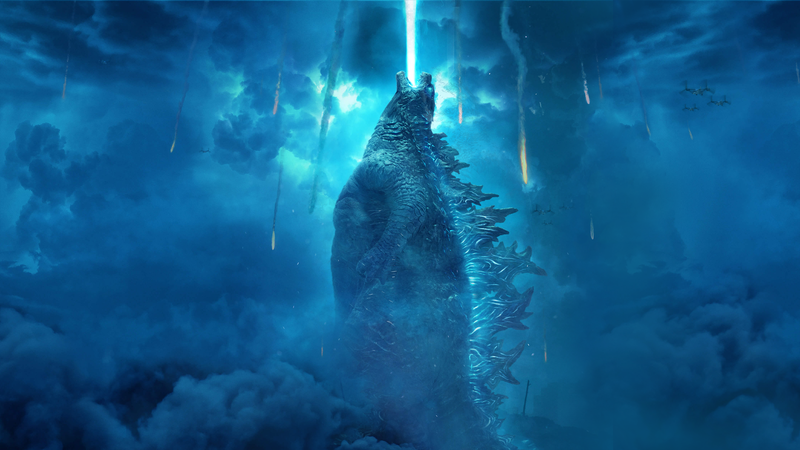
The sequel to 2014's Godzilla sees minimal changes to the new design of the Kaiju, but does include more defined skutes on his back (like the classic design) and more pronounced feet and toes.
-
Walk of Fame!
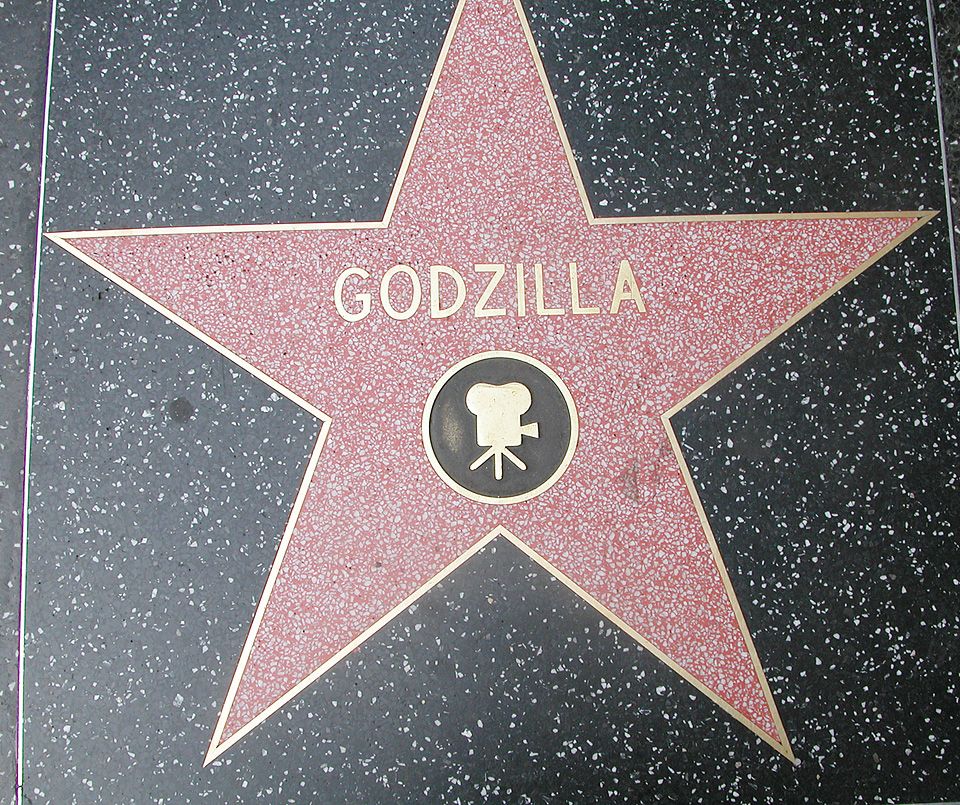
In 2004, the King of the Monsters became one of just 18 other fictional character to have a star on the Hollywood Walk of Fame, joining the likes of Kermit the Frog, Mickey Mouse, and Shrek.
-
Japanese Godzilla Comics
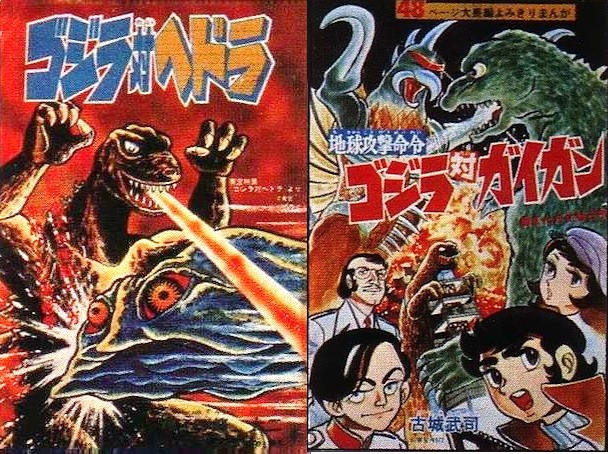
In addition to his live action appearances, Godzilla has enjoyed a long life in the pages of comics a number of which were published exclusively in Japan. Each of the films released by Toho was adapted into the comic format, typically with additional sequences, and many of them were even adapted multiple times.
-
Marvel's Godzilla Comics
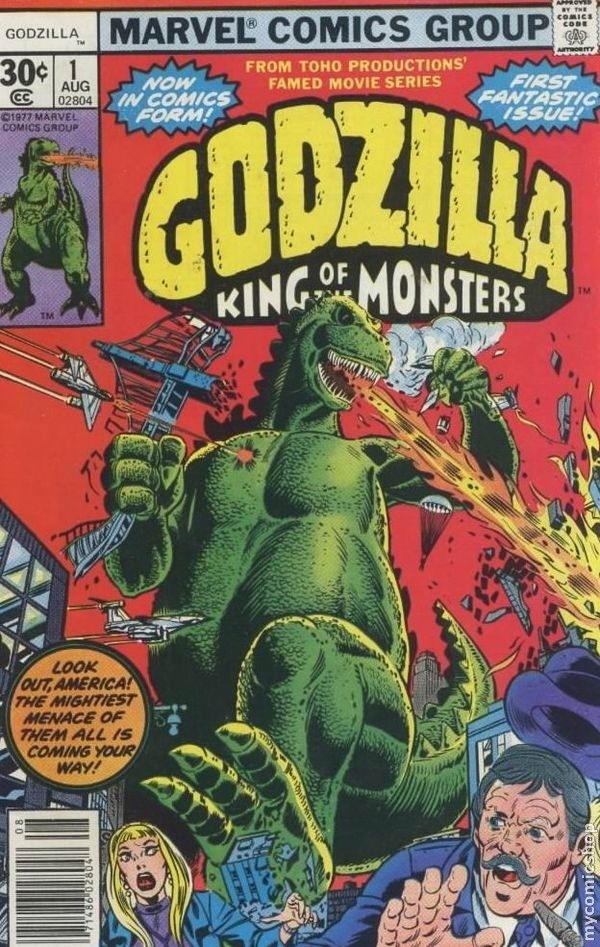
In 1977, Marvel Comics gained the rights to the character and inserted him into the Marvel universe where he ran into the likes of Nick Fury and S.H.I.E.L.D., the Fantastic Four, The Avengers and Spider-Man!
-
Dark Horse's Godzilla Comics
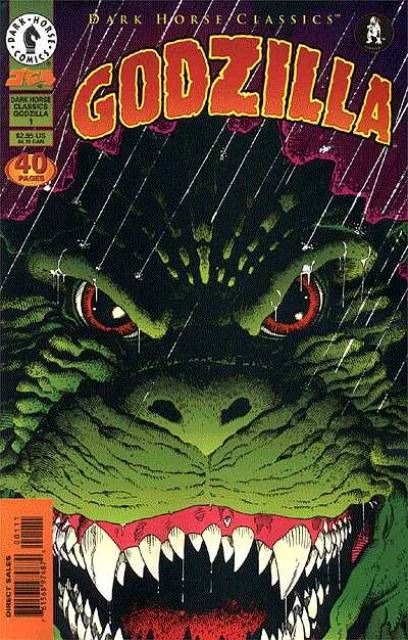
Dark Horse held the rights to the character from 1987 to 1999 where they published a number of series based on the character, including an adaptation of the infamous Godzilla vs. Charles Barkley commercial.
-
IDW's Godzilla Comics

In 2010, IDW gained the rights to the character and have published several series based on the character and the other Toho monsters including Eric Powell's "Godzilla: Kingdom of Monsters" and James Stokoe's "Godzilla: Half Century War."
-
Godzilla Video Games
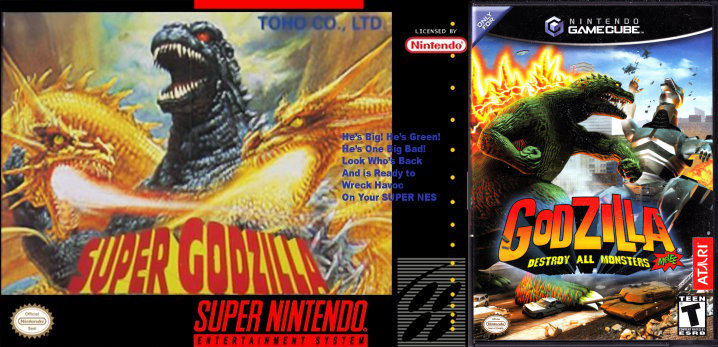
Godzilla has also appeared in a number of video games over the years, ranging from "Super Godzilla" for the Super Nintendo to "Godzilla: Destroy All Monsters Melee" for the Nintendo GameCube and Microsoft Xbox.
